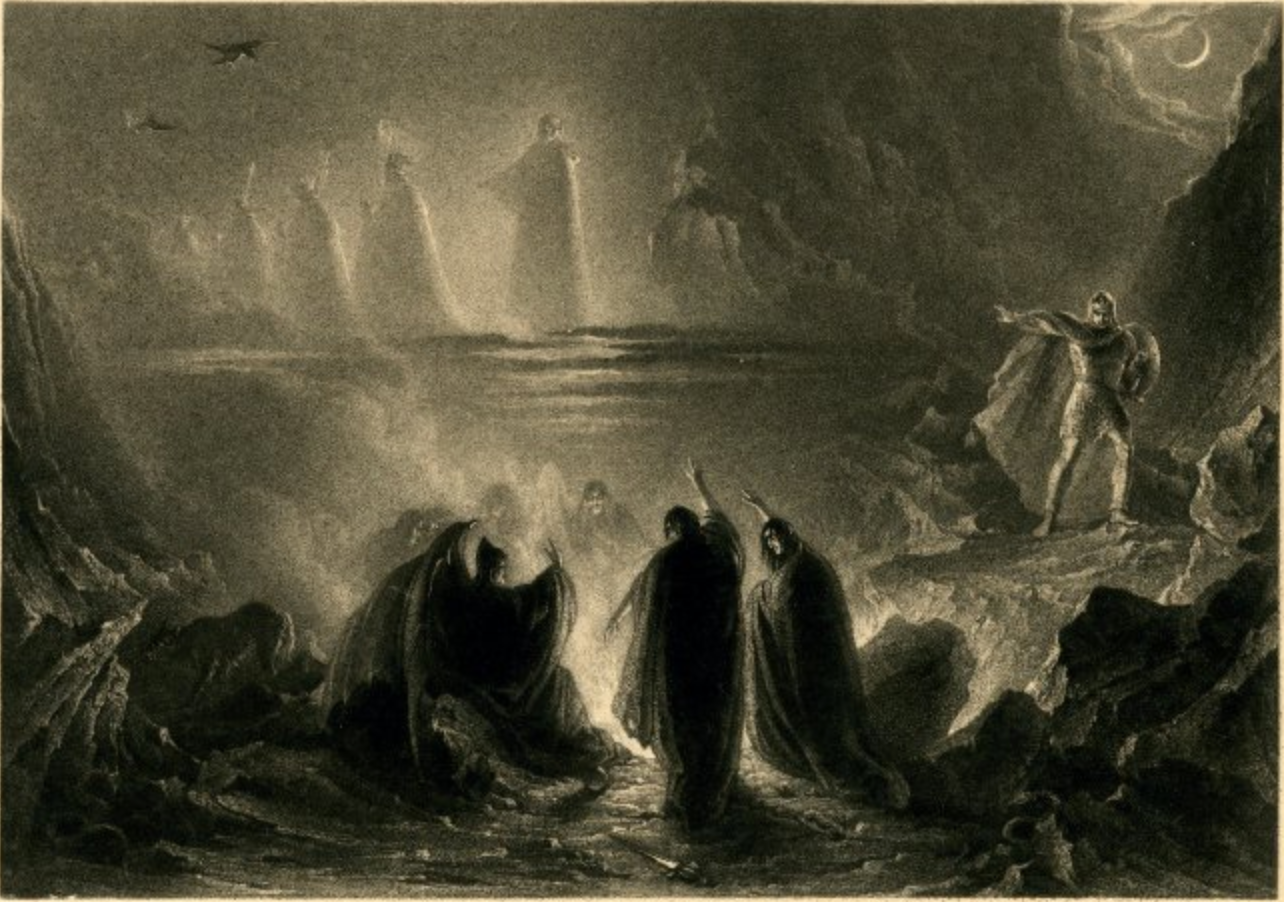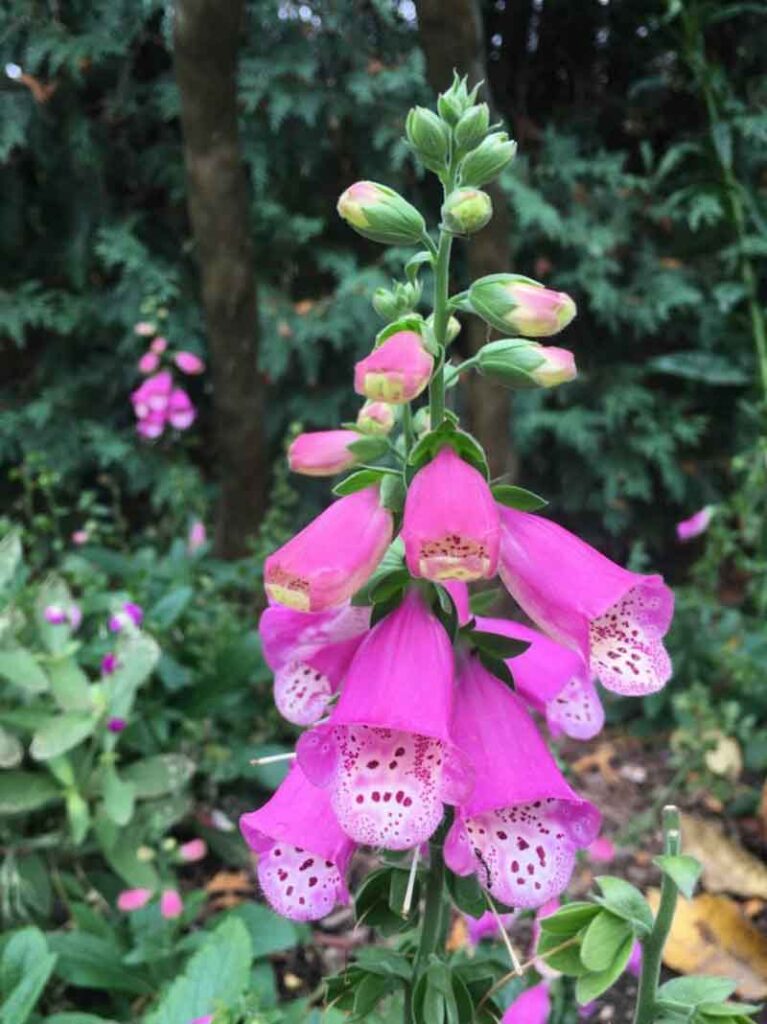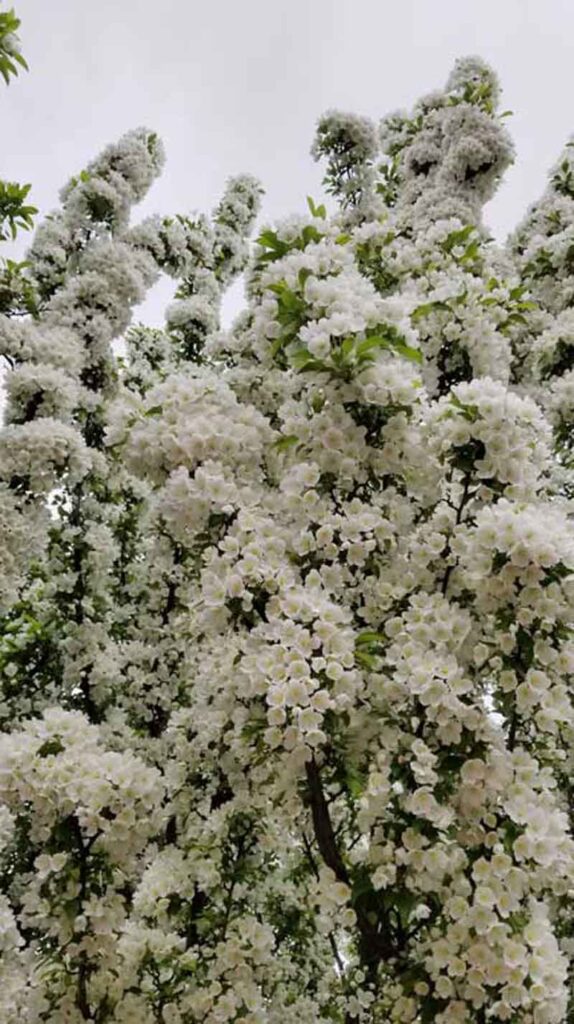From Shakespeare to J.K. Rowling – we seem to have an undying curiosity of what plants the witches used… and for what. With Halloween right around the corner, we thought we would share some with you.
Shakespeare gave us the most recognizable and infamous of all incantations with the three Scottish witches in Macbeth:
“Eye of newt, and toe of frog,
Macbeth
Wool of bat, and tongue of dog,
Adder’s fork, and blind-worm’s sting,
Lizard’s leg, and howlet’s wing,–
For a charm of powerful trouble,
Like a hell-broth boil and bubble.”
Although there are variations on the plants symbolized in the chant, following are some of the more accepted versions:
- Eye of newt – mustard seed
- Toe of frog – buttercup leaves
- Wool of bat – holly or moss
- Tongue of dog – hounds tooth
- Adder’s fork – violet
- Blind worm’s sting – Knotweed
- Lizard’s leg – Ivy
- Howlet’s wing – garlic or maybe ginger (but garlic was more common)
We wonder, did the wise women (or witch) use odd names for effect, for safety, or something else?

Women practiced the healing arts throughout Europe, mostly as midwives until they became the target of the church and the state – probably for the same reasons – power and money. When Rome fell, the monks quickly gathered all the healing herbs brought across Europe by the Romans. They became the healers and no one likes competition. Power hungry and corrupt leaders always need a scapegoat to blame for the troubles in their worlds, and what better place to look than older defenseless women who owned valuable property just waiting to be confiscated?
I’ve always questioned the bravery or maybe it was the stupidity of these foolish men and it boggles the mind…. If these women were as powerful and wicked as charged, how on earth did those doing the charging, torturing and burning survive if a twitch of the nose or a slight of hand could web his fingers, curse his family… or far, far worse?
But she endured, from the burning times until now – where all religions are reluctantly accepted, the journey of the “witch” (or wise woman) lives on, but still under a cloud of suspicion.
But we’ll go back to the old woman who lived on the far edges of the village, alone, with her cats. Her home is rundown, the plants and trees are overgrown, the path is covered in leaves and rusty gate squeaks as we push it open. It’s autumn and the days are shorter and there’s briskness to the air.
Monkshood (aconite) so poisonous that it was used to poison arrows. In WWII, the Nazi’s put it on their bullets. Witches believed it could make them invisible if they tied the seeds to them wrapped in lizard’s skin. It also protected one from vampires and werewolves.
The Winter Rose (Black Hellebore) sits in the corner in bloom. Thought to be a cure for insanity, it would also help one become invisible.
There in the back is a lush bunch of Witches Bells (Fox Glove). They seem to be growing in each corner of the stone fence. Ahhh, for protection. I imagine if we looked in the cottage, we’d see black stone floors – dyed with the leaves of the Fox Glove – to keep negativity out.

What self-respecting witch would be without Moon Flower (Datura) with white flowers that bloom in the night and give off an intoxicating fragrance? Used as a hallucinogen, and to increase physic vision and communicate with friendly spirits, the plant is poison to even handle. When a visitor would come begging for something to stop another from harming her/him, the old woman would often take the seeds, wrap them in brown cloth and tell the visitor to gather something belonging to the alleged ill-doer and place the bag of seeds on top of the item and hide it well. So long as the bag remained over the object, the ill-doer could do them no harm.
Overgrowing anything in its way, the deadly nightshade knows it will always be the Devil’s favorite plant. Often nightshade was put in ‘flying’ ointments, but was also handy for helping one forget an old love. Some believe the more nightshade in a garden, the greater the protection from evil.
All alone in a corner are the Mandrakes – waiting for some poor fool to pull them out. They scream when ripped from the ground you know, and any person or animal hearing the scream will immediately perish. Long used for dark magic, this plant was sacred to Aphrodite and used as a powerful aphrodisiac. Too strong, some say. Its roots are shaped like humans and carrying even a tiny piece insures good health and much more. It hides from man, and it glows in the dark.
The following was taken from an old English Herbarium from 1000 AD:
Harvesting Mandrake:
- Before sunset – draw a circle around it with an iron tool lest it flee from you.
- While facing west, cut off the top of the plant.
- Being careful not to touch the plant, dig around it with an iron tool.
- When you see its hands and feet, fasten them. Take the other end of the rope and tie it around a hungry black dog’s neck.
- Throw meat in front of the black dog so he cannot reach it unless he pulls up the plant.
- Run fast lest you hear the screams and perish with the dog.
Difficult, yes, but Mandrake was one of the best plants for hexing, and black dogs easily come by.
Aside from the poison garden, people would visit the old woman for a variety of reasons.
Many wanted love charms. In front of the house, for easy pickings, sits the love potion garden. The most important plant in the garden for love is the Apple Tree. Sometimes the spell was as easy as cutting an apple with the intention of forever love and handing half to the one you want to fall in love with you. You had to eat the halves at the same time, and they mustn’t know or the charm wouldn’t work.
Caution was given about taking care when cutting the apple If you cut and there was an even number of seeds on both sides, love and a happy marriage will follow. If one seed is cut, it will mean rocky love will follow and the marriage will be filled with anger and yelling. If two seeds are cut, marriage will follow, but the husband will perish within one year.
Apple blossoms are so sweet smelling, is it any wonder they were often dried and used in love potions?

Protective amulets were often cut of apple wood, and when properly done, insured a long life.
Horses will often stand under the trees and enjoy apples. We can’t see them, but their invisible cousins – the unicorns – were often lured in to share secrets of the other world with those who knew how to listen.
Other plants in the love garden include lemon balm, roses, basil, catnip, daisies, peppermint mallow and periwinkle. Several of these in a sachet under your pillow might help the man of your dreams come into your life. And don’t forget, the old woman would advise, slip a piece of the elder (after asking permission of course) into the wedding bouquet to insure good luck in the marriage.
If your love has left you, you might be instructed to put a vase of mallow flowers in your window. This should make him think of you and return to your arms.
The inability to become pregnant brought several women thru the creaky gate. In the back, along the mossy stone fence, lies the fertility garden. It is filled with cucumbers, carrots, mustard, and poppy (sometimes it just took some relaxing) among the many.
Some women would come to visit the Old Woman to insure there was no pregnancy or question what was to be done about a current one. That garden was outside her back gate and the plants were scattered about through the forest and looking like they weren’t cared for to the uninformed. This allowed her to claim ignorance if ‘they’ came for her. We won’t talk about what might be in that garden right now.
Infidelity was a common complaint and many women wandered in seeking help with their rotten husbands. The old woman might hand them some dried basil with instructions to sprinkle it on his cheating heart as he slept. Or she might suggest slipping a caraway seed or two in his pocket.
And thievery – oh such a common complaint. For that the old woman might suggest caraway seed sprinkled around the property to help bad guys choose another place. And if you were about to travel, a piece of comfrey with your belongings would help them become unnoticed.
Yes, the old woman’s garden was full of plants. Every corner of her yard offered up something to the trained healer/witch/midwife.
No wonder so many were afraid of her knowledge.






